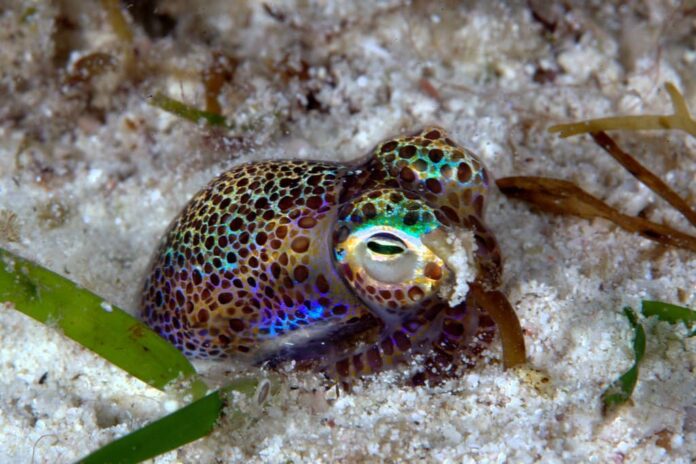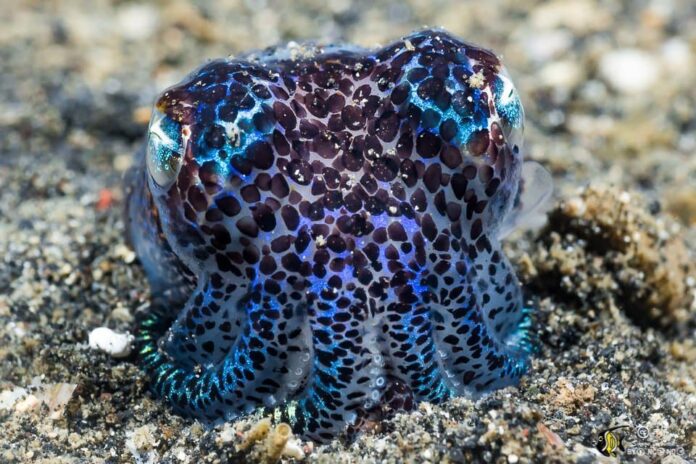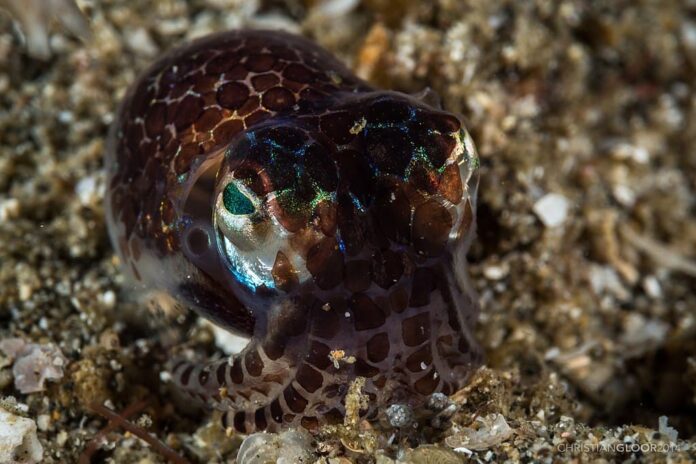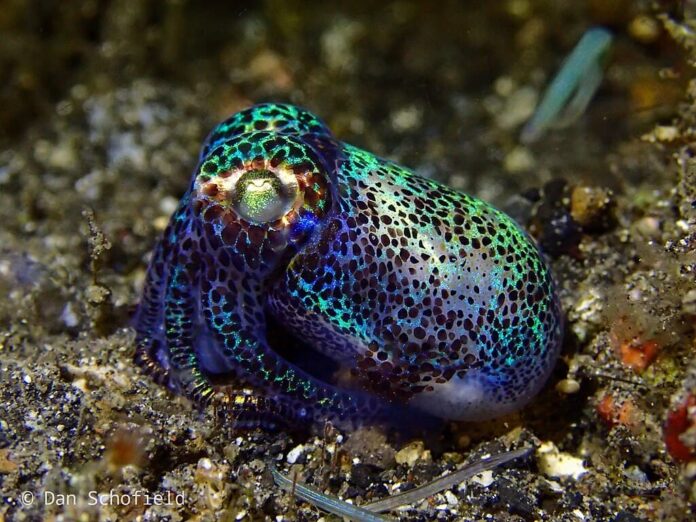Hummingbird bobtail squid is among the cutest squid species that you will ever see. It is a small squid that matures fast with the ability to produce a large number of offspring, making it super fascinating. Looking pretty is one thing, many other features that many other squids do not have is another interesting thing. Let’s take a look and see what else they have.
1Appearance

A hummingbird bobtail squid has a compact and round body with 8 arms and 2 tentacles. Those 8 arms have suckers on them while the 2 tentacles play an important role in grabbing prey. Not different from many other animals out there, this sepia also displays sexual dimorphism. Males are no longer than 3 centimeters long while females can grow up to 5 centimeters, excluding their arms.
The most gorgeous part about them is the translucent background color of the body with countless tiny dark chromatophores all over. Chromatophores are cells that contain pigment that cover the body, arms, head, ventral and dorsal areas of the mantle, except for the tentacles. They also have proportionally large eyes that give excellent night vision for hunting at night.
2Behavior

Hummingbird bobtail squids bury themselves under the sand during the day with only their eyes showing, and only emerge at night. This adorable squid is active at night, coming out from the burial to feed and mate. The cutest thing is when they use their tentacles to dig themselves into the sand to hide. In the dark, it uses its bioluminescent organ in its gill cavity that emits enough light to see but lays low from predators. This light organ is a result of the symbiotic relationship with a species of bioluminescent bacteria that gives them the glittery glow.
This special relationship provides the sepia with camouflage so the moon does not silhouette them at night. The strategy is known as counter-illumination which means the light only beams down the ocean during hunting. Its light comes from the underside of the squid so the predators from above cannot see them. And what does the bacteria get from the squid? They feed on the amino acid solution and sugar that the squid secretes, and everyone is happy. How cool, right?
3Feeding & Habitats

As a small animal, it does not have a wide range of choices when it comes to food. So the main diet of this squid is small benthic crustaceans that they can find over fine sandy bottoms of coral and rocky reefs. Some of their common meals are krills and shrimps, and they hunt by darting rapidly at the prey. Then they use the tentacles to seize the meal and pull it into their mouth by a simple tentacle retraction. They also use their arms to hold the prey in place as their sharp beaks bite off the prey into small pieces.
Hummingbird bobtail squid has a wide distribution throughout the tropical waters of the central Indo-Pacific region. Their range is from Indonesia all the way to Japan and China where they live as deep as 107 meters. They are the residents of the benthic layer due to their preference for fine or sandy sediments seafloors and seagrass bottom. Since they like to bury themselves when not hunting, these are the perfect habitats for them.
Related Post: Beautiful Marine Gastropods




